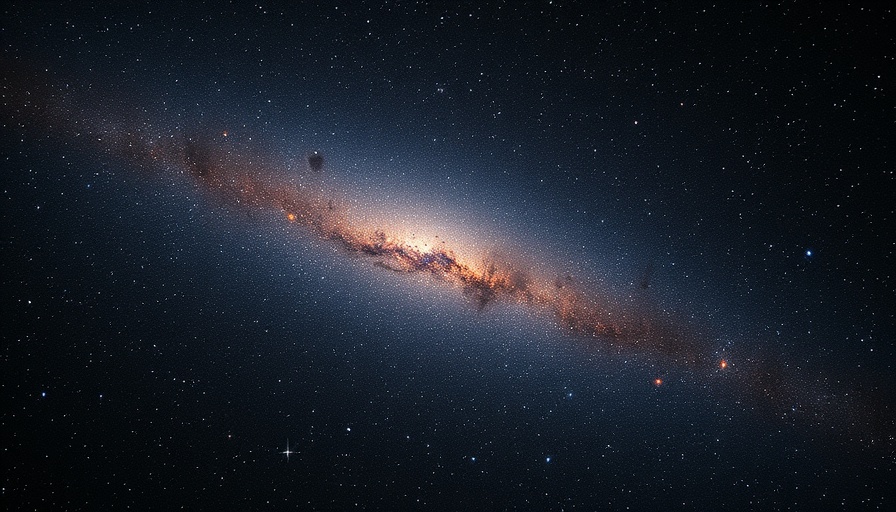
Decoding NGC 5634: What Makes This Cluster Unique?
In the vast expanse of the universe, globular clusters are crucial to understanding cosmic evolution. NGC 5634, located in the constellation Virgo and around 82,200 light-years from Earth, has been under the microscope recently as astronomers challenge its presumed origins linked to the Sagittarius dwarf spheroidal galaxy. This analysis sheds light on the cluster's unique structural and kinematical properties, which have implications for our understanding of star formation and galactic evolution.
Unexpected Findings on Structure and Kinematics
The study reveals that NGC 5634 is approximately 12.8 billion years old and has a low metallicity of -1.8 dex. Perhaps even more intriguing, the astronomical team from Beijing Normal University analyzed data from the DESI Legacy Imaging Survey, which led to vital calculations: a tidal radius of 8.35 arcminutes and a core radius of 0.21 arcminutes. This data helps astronomers gauge the cluster's concentration. Initial assumptions had tied NGC 5634 to the Sagittarius stream; however, the lack of extra-tidal features like tidal tails suggests a more complex history.
The Case Against Sagittarius Origins
Even more compelling than its structure, the kinematical characteristics of NGC 5634 paint a different picture. Research indicates that this cluster's orbit only briefly intersects with the Sagittarius stream, diverging significantly under long-term studies. As a result, the connection to the Sagittarius system feels tenuous at best. This challenges prior consensus among astronomers who assumed a strong association.
What’s Next for NGC 5634 Research?
Continued studies will be essential to fully understand NGC 5634’s genesis and to ascertain whether it fits better within the framework of other galactic structures, such as the Gaia-Sausage-Enceladus scenario—a significant event thought to have shaped the Milky Way’s history. Understanding where NGC 5634 fits into this galactic puzzle could redefine the cosmic narratives of our universe.
The Broader Implications for Cosmic Studies
This new information about NGC 5634 not only enriches our understanding of this particular cluster but also prompts larger questions regarding the origins of similar clusters across the universe. The close examination of stellar streams and their dynamics can yield insight into the interactions of galaxies over eons, highlighting the beautiful complexity of cosmic architecture.
The implications of these findings extend beyond just NGC 5634, challenging scientists to reconsider established theories about the formation and behavior of globular clusters throughout galactic histories.
 Add Row
Add Row  Add
Add 




Write A Comment